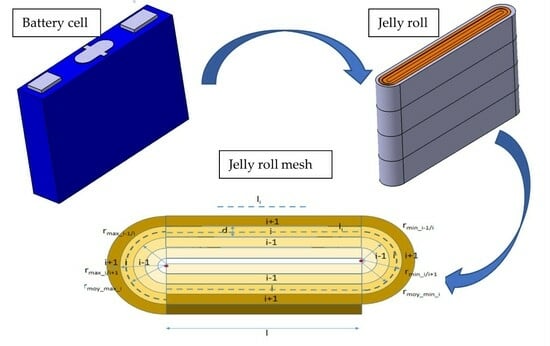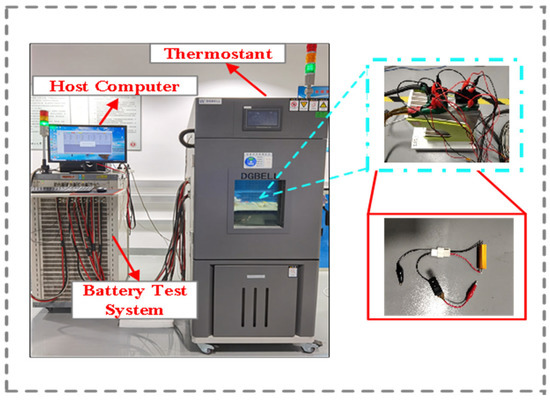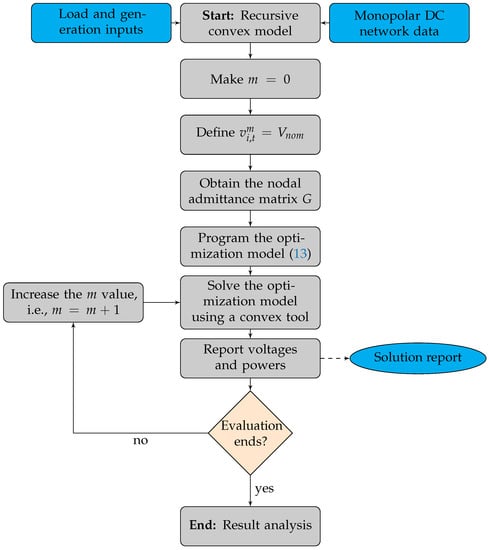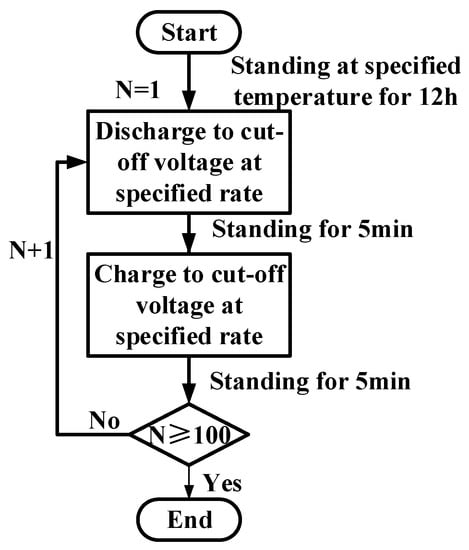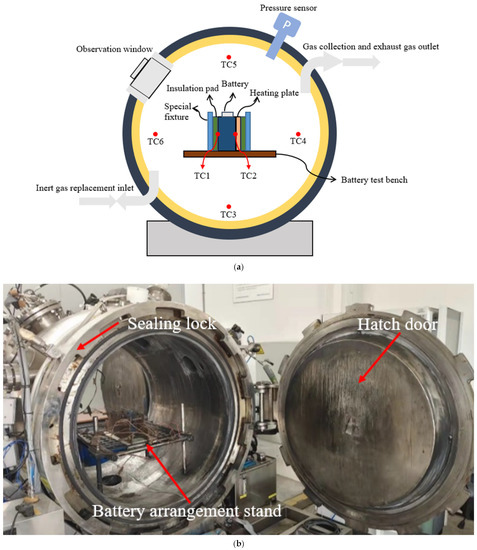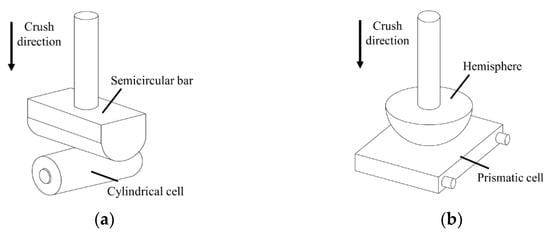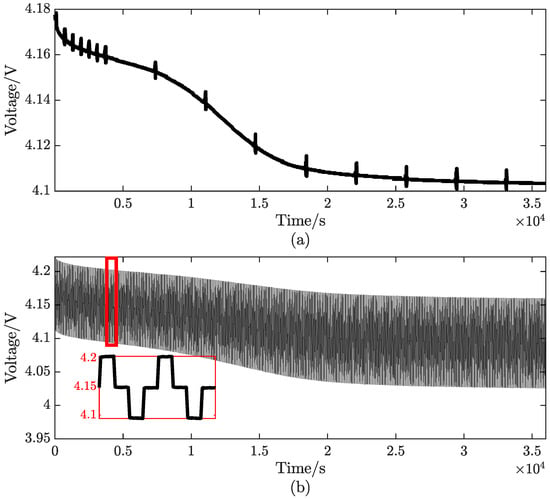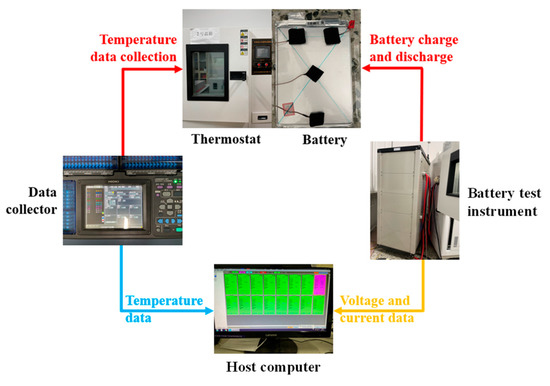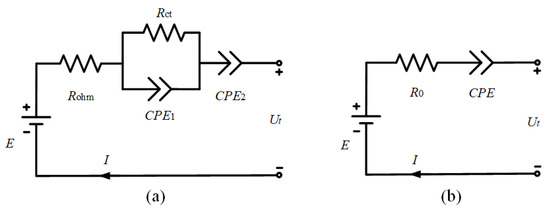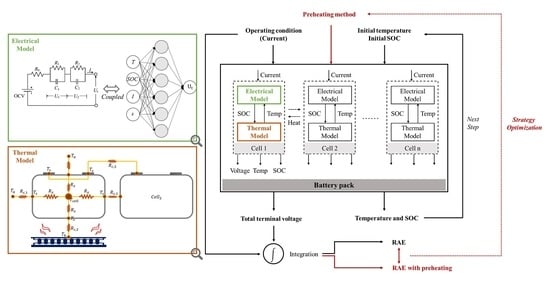Advances in Battery Energy Storage and Applications
Share This Topical Collection
Editors
 Dr. Ottorino Veneri
Dr. Ottorino Veneri
 Dr. Ottorino Veneri
Dr. Ottorino Veneri
E-Mail
Website
Collection Editor
Institute of Sciences and Technologies for Sustainable Energy and Mobility (STEMS), National Research Council of Italy (CNR), 80125 Naples, Italy
Interests: electric vehicle; smart grid; sustainable mobility; power converters; storage systems
Special Issues, Collections and Topics in MDPI journals
 Dr. Xuning Feng
Dr. Xuning Feng
 Dr. Xuning Feng
Dr. Xuning Feng
grade
E-Mail
Website
Collection Editor
State Key Laboratory of Automotive Safety and Energy, Tsinghua University, Beijing 100084, China
Interests: safety; recycling; battery degradation
Topical Collection Information
Dear Colleagues,
Currently, the topic of battery energy storage and the applications of batteries is of great interest in the pursuit of a sustainable society. In fact, batteries and their applications are strictly interrelated: the design of new and improved batteries is stimulated by new and improved applications and vice versa. For some applications, batteries with new electrolytes or electrode materials have been specifically realized, while in others, improvements are derived from better energy storage engineering. The aim of this Topical Collection is to update the battery-powered applications and the improvements made through their batteries in terms of technological advancements.
This Topical Collection will include (but not be limited to) the following topics:
- Battery standards;
- Battery safety;
- Battery system design;
- Battery degradation;
- Battery fast charging;
- Battery manufacturing and recycling;
- Advanced battery characterization methods;
- Future batteries, i.e., solid-state batteries, lithium batteries, etc.
Dr. Ottorino Veneri
Dr. Xuning Feng
Collection Editors
Manuscript Submission Information
Manuscripts should be submitted online at www.mdpi.com by registering and logging in to this website. Once you are registered, click here to go to the submission form. Manuscripts can be submitted until the deadline. All submissions that pass pre-check are peer-reviewed. Accepted papers will be published continuously in the journal (as soon as accepted) and will be listed together on the collection website. Research articles, review articles as well as short communications are invited. For planned papers, a title and short abstract (about 100 words) can be sent to the Editorial Office for announcement on this website.
Submitted manuscripts should not have been published previously, nor be under consideration for publication elsewhere (except conference proceedings papers). All manuscripts are thoroughly refereed through a single-blind peer-review process. A guide for authors and other relevant information for submission of manuscripts is available on the Instructions for Authors page. Batteries is an international peer-reviewed open access monthly journal published by MDPI.
Please visit the Instructions for Authors page before submitting a manuscript.
The Article Processing Charge (APC) for publication in this open access journal is 2700 CHF (Swiss Francs).
Submitted papers should be well formatted and use good English. Authors may use MDPI's
English editing service prior to publication or during author revisions.
Keywords
- fast charging
- degradation
- safety
- battery design
- recycling
- solid state batteries
- electric vehicles
- battery manager system
Published Papers (14 papers)
Open AccessArticle
An Electrothermal Model of an NMC Lithium-Ion Prismatic Battery Cell for Temperature Distribution Assessment
by
Said Madaoui, Jean-Michel Vinassa, Jocelyn Sabatier and Franck Guillemard
Viewed by 2078
Abstract
Charge time has become one of the primary issues restricting the development of electric vehicles. To counter this problem, an adapted thermal management system needs to be designed in order to reduce the internal thermal gradient, by predicting the surface and internal temperature
[...] Read more.
Charge time has become one of the primary issues restricting the development of electric vehicles. To counter this problem, an adapted thermal management system needs to be designed in order to reduce the internal thermal gradient, by predicting the surface and internal temperature responses of the battery. In this work, a pseudo 3D model is developed to simulate battery cell performance and its internal states under various operational scenarios such as temperature and convection conditions as well as the applied current during charge and discharge. An original mesh of the JR is proposed where heat exchanges in the three directions (radial, orthoradial and axial) are considered. The model represents one of the solutions that enable increasing the lifespan of batteries while decreasing charging time. It offers the opportunity to optimize operating parameters to extend battery life. In this paper, attention was paid not only to the core and non-core components, but also to the experiments required to parametrize the thermal and electrochemical models (heat generation). Unlike existing approaches documented in the literature, the model developed in this work achieves an impressive balance between computational efficiency and result accuracy, making it a groundbreaking contribution in the field of electric vehicle technology.
Full article
►▼
Show Figures
Open AccessArticle
Switched Discharge Device for Enhanced Energy Extraction from Li-Ion 18650
by
Vasile Surducan and Olivia-Ramona Bruj
Viewed by 1697
Abstract
All autonomous electrically powered devices require a continuous power supply from batteries. Increasing the discharge performance is the top priority in the Lithium-Ion (Li-Ion) battery field and pulsed discharge is proving numerous advantages. In this paper, the maximum efficiency of pulsed discharge method
[...] Read more.
All autonomous electrically powered devices require a continuous power supply from batteries. Increasing the discharge performance is the top priority in the Lithium-Ion (Li-Ion) battery field and pulsed discharge is proving numerous advantages. In this paper, the maximum efficiency of pulsed discharge method on a constant load while the cells are alternately switched with dead-time is thoroughly studied. Therefore, a novel Li-Ion charge/discharge and measurement device (SWD) using fast switching MOSFET was designed and fabricated. The device can alternately switch up to 8.3 kHz two Li-Ion 18650 batteries, generating continuous power to the programmable load and monitor the parameters that impact the capacity of the battery. An EIS (Electrochemical Impedance Spectroscopy) analysis is employed to evaluate the impedance and the behavior of the cells at frequencies up to 10 kHz. Experimental results reveal that a maximum discharge time is determined when two cells are switched at a frequency of 5.8 kHz. As a consequence, the total capacity of two switched batteries in a single discharge cycle is increased by 16.6%. Pulsed discharge efficiency is visible starting from 70% State of Charge (SOC) and is correlated with the rest time, reduced heat loss and inductance, respectively.
Full article
►▼
Show Figures
Open AccessArticle
Efficient Reallocation of BESS in Monopolar DC Networks for Annual Operating Costs Minimization: A Combinatorial-Convex Approach
by
Luis Fernando Grisales-Noreña, Oscar Danilo Montoya and Jesús C. Hernández
Cited by 3 | Viewed by 1478
Abstract
This article deals with the solution of a mixed-integer nonlinear programming (MINLP) problem related to the efficient reallocation of battery energy storage systems (BESS) in monopolar direct current (DC) grids through a master–slave optimization approach. The master stage solves the integer nature of
[...] Read more.
This article deals with the solution of a mixed-integer nonlinear programming (MINLP) problem related to the efficient reallocation of battery energy storage systems (BESS) in monopolar direct current (DC) grids through a master–slave optimization approach. The master stage solves the integer nature of the MINLP model, which is related to the nodes where the BESS will be located. In this stage, the discrete version of the vortex search algorithm is implemented. To determine the objective function value, a recursive convex approximation is implemented to solve the nonlinear component of the MINLP model (multi-period optimal power flow problem) in the slave stage. Two objective functions are considered performance indicators regarding the efficient reallocation of BESS in monopolar DC systems. The first objective function corresponds to the expected costs of the annual energy losses, and the second is associated with the annual expected energy generation costs. Numerical results for the DC version of the IEEE 33 bus grid confirm the effectiveness and robustness of the proposed master–slave optimization approach in comparison with the solution of the exact MINLP model in the General Algebraic Modeling System (GAMS) software. The proposed master–slave optimizer was programmed in the MATLAB software. The recursive convex solution of the multi-period optimal power flow problem was implemented in the convex discipline tool (CVX) with the SDPT3 and SEDUMI solvers. The numerical reductions achieved with respect to the benchmark case in terms of energy loss costs and energy purchasing costs were
and
, which surpassed the results reached by the GAMS software, with reductions of about
and
.
Full article
►▼
Show Figures
Open AccessArticle
Identification of Internal Short-Circuit Faults in Lithium-Ion Batteries Based on a Multi-Machine Learning Fusion
by
Guangying Zhu, Tao Sun, Yuwen Xu, Yuejiu Zheng and Long Zhou
Cited by 3 | Viewed by 2862
Abstract
Internal short-circuit (ISC) faults are a common cause of thermal runaway in lithium-ion batteries (LIBs), which greatly endangers the safety of LIBs. Different LIBs have common features related to ISC faults. Due to the insufficient volume of acquired ISC fault data, conventional machine
[...] Read more.
Internal short-circuit (ISC) faults are a common cause of thermal runaway in lithium-ion batteries (LIBs), which greatly endangers the safety of LIBs. Different LIBs have common features related to ISC faults. Due to the insufficient volume of acquired ISC fault data, conventional machine learning models could not effectively identify ISC faults. To compensate for the above deficiencies, this paper proposes a multi-machine learning fusion method to predict ISC faults and to perform faults warning classification under multiple operating conditions using the input of voltage normalization. Firstly, learning data acquisition is captured by experiments and simulation. Secondly, the simulation data are inputted into the ResNet-convolutional neural network (CNN) for pretraining, followed by the transfer learning method to freeze parts of the model layers in the CNN, and part of the experimental data are also inputted into the CNN model for parameter fine-tuning to build a multi-machine learning model. Finally, the degree of ISC faults within the laboratory battery is predicted based on the multi-machine learning model. The results show that the CNN model had a 99.9% prediction accuracy on the simulated dataset, and the multi-machine learning fusion model after transfer learning had a 96.67% prediction accuracy on the laboratory battery dataset, which can accurately identify different levels of ISC faults in batteries and realize the graded warning of ISC faults.
Full article
►▼
Show Figures
Open AccessArticle
An Efficient EMS for BESS in Monopolar DC Networks with High Penetration of Renewable Generation: A Convex Approximation
by
Luis Fernando Grisales-Noreña, Oscar Danilo Montoya and Jesus C. Hernández
Cited by 8 | Viewed by 1497
Abstract
This research presents an efficient energy management system (EMS) for battery energy storage systems (BESS) connected to monopolar DC distribution networks which considers a high penetration of photovoltaic generation. The optimization model that expresses the EMS system with the BESS and renewable generation
[...] Read more.
This research presents an efficient energy management system (EMS) for battery energy storage systems (BESS) connected to monopolar DC distribution networks which considers a high penetration of photovoltaic generation. The optimization model that expresses the EMS system with the BESS and renewable generation can be classified as a nonlinear programming (NLP) model. This study reformulates the NLP model as a recursive convex approximation (RCA) model. The proposed RCA model is developed by applying a linear approximation for the voltage magnitudes only at nodes that include constant power loads. The nodes with BESS and renewables are approximated through the relaxation of their voltage magnitude. Numerical results obtained in the monopolar version of a 33-bus system, which included three generators and three BESS, demonstrate the effectiveness of the RCA reformulation when compared to the solution of the exact NLP model via combinatorial optimization techniques. Additional simulations considering wind power and diesel generators allow one to verify the effectiveness of the proposed RCA in dealing with the efficient operation of distributed energy resources in monopolar DC networks via recursive convex programming.
Full article
►▼
Show Figures
Open AccessArticle
Capacity Fading Rules of Lithium-Ion Batteries for Multiple Thermoelectric Aging Paths
by
Jiuyu Du, Wenbo Wang, Zhixin Wei, Fangfang Hu and Xiaogang Wu
Cited by 1 | Viewed by 2881
Abstract
The ambient temperature and charging rate are the two most important factors that influence the capacity deterioration of lithium-ion batteries. Differences in temperature for charge–discharge conditions significantly impact the battery capacity, particularly under high-stress conditions, such as ultrafast charging. The combined negative effects
[...] Read more.
The ambient temperature and charging rate are the two most important factors that influence the capacity deterioration of lithium-ion batteries. Differences in temperature for charge–discharge conditions significantly impact the battery capacity, particularly under high-stress conditions, such as ultrafast charging. The combined negative effects of the ambient temperature and a high charging rate on the capacity of a lithium-ion battery require further research. Here, multiple scenarios of different temperatures and charging rates were considered to examine their influence on battery capacity deterioration, focusing on the effect of high charging rates above 2 C. Three test temperatures and three charging rates were selected, and experiments were performed to evaluate the battery capacity over several charge–discharge cycles. A comparative analysis was performed on the capacity, impedance, and probability density function (PDF). The results showed that increasing the charging rate delayed the response of the phase change reaction to the voltage, which accelerated the corresponding capacity deterioration. At high charging rates, the main causes of capacity deterioration were the loss of active lithium in the battery and the loss of active material from the negative electrode. Most of the product from the side reaction between the lithium coating and electrolyte remained in the electrolyte and had no evident effect on impedance. Therefore, high charging rates significantly increase the temperature of the battery, and a high charging rate and temperature exert a coupled negative effect on the battery capacity. Thermal management strategies for lithium-ion batteries must comprehensively optimize the temperature and charging rate in real time.
Full article
►▼
Show Figures
Open AccessArticle
Experimental Study on Thermal Runaway Behavior of Lithium-Ion Battery and Analysis of Combustible Limit of Gas Production
by
Xinwei Yang, Hewu Wang, Minghai Li, Yalun Li, Cheng Li, Yajun Zhang, Siqi Chen, Hengjie Shen, Feng Qian, Xuning Feng and Minggao Ouyang
Cited by 11 | Viewed by 4745
Abstract
Lithium-ion batteries (LIBs) are widely used in electric vehicles (EV) and energy storage stations (ESS). However, combustion and explosion accidents during the thermal runaway (TR) process limit its further applications. Therefore, it is necessary to investigate the uncontrolled TR exothermic reaction for safe
[...] Read more.
Lithium-ion batteries (LIBs) are widely used in electric vehicles (EV) and energy storage stations (ESS). However, combustion and explosion accidents during the thermal runaway (TR) process limit its further applications. Therefore, it is necessary to investigate the uncontrolled TR exothermic reaction for safe battery system design. In this study, different LIBs are tested by lateral heating in a closed experimental chamber filled with nitrogen. Moreover, the relevant thermal characteristic parameters, gas composition, and deflagration limit during the battery TR process are calculated and compared. Results indicate that the TR behavior of NCM batteries is more severe than that of LFP batteries, and the TR reactions becomes more severe with the increase of energy density. Under the inert atmosphere of nitrogen, the primarily generated gases are H
2, CO, CO
2, and hydrocarbons. The TR gas deflagration limits and characteristic parameter calculations of different cathode materials are refined and summarized, guiding safe battery design and battery selection for power systems.
Full article
►▼
Show Figures
Open AccessEditor’s ChoiceReview
A Review of Lithium-Ion Battery Failure Hazards: Test Standards, Accident Analysis, and Safety Suggestions
by
Xin Lai, Jian Yao, Changyong Jin, Xuning Feng, Huaibin Wang, Chengshan Xu and Yuejiu Zheng
Cited by 34 | Viewed by 11064
Abstract
The frequent safety accidents involving lithium-ion batteries (LIBs) have aroused widespread concern around the world. The safety standards of LIBs are of great significance in promoting usage safety, but they need to be constantly upgraded with the advancements in battery technology and the
[...] Read more.
The frequent safety accidents involving lithium-ion batteries (LIBs) have aroused widespread concern around the world. The safety standards of LIBs are of great significance in promoting usage safety, but they need to be constantly upgraded with the advancements in battery technology and the extension of the application scenarios. This study comprehensively reviews the global safety standards and regulations of LIBs, including the status, characteristics, and application scope of each standard. A standardized test for thermal runaway triggering is also introduced. The recent fire accidents in electric vehicles and energy storage power stations are discussed in relation to the upgrading of the rational test standards. Finally, the following four suggestions for improving battery safety are proposed to optimize the safety standards: (1) early warning and cloud alarms for the battery’s thermal runaway; (2) an innovative structural design for a no-fire battery pack; (3) the design of a fire water injection interface for the battery pack; (4) the design of an immersive energy storage power station. This study provides insights for promoting the effectiveness of relevant safety standards for LIBs, thereby reducing the failure hazards.
Full article
►▼
Show Figures
Open AccessArticle
Lithium Plating Detection Based on Electrochemical Impedance and Internal Resistance Analyses
by
Yue Pan, Dongsheng Ren, Xuebing Han, Languang Lu and Minggao Ouyang
Cited by 4 | Viewed by 3687
Abstract
Lithium plating, induced by fast charging and low-temperature charging, is one of the reasons for capacity fading and causes safety problems for lithium-ion batteries. Hence, reliable and effective non-destructive detection methods for lithium plating are needed. In this research, electrochemical impedance and internal
[...] Read more.
Lithium plating, induced by fast charging and low-temperature charging, is one of the reasons for capacity fading and causes safety problems for lithium-ion batteries. Hence, reliable and effective non-destructive detection methods for lithium plating are needed. In this research, electrochemical impedance and internal resistance for batteries are measured during the rest period after charging. The results for lithium plating batteries and normal batteries are compared and analyzed. Lithium plating detection is realized with multiple indicators extracted from electrochemical impedance and internal resistance results. The effectiveness of the proposed detection methods is verified by the experiments conducted with commercial large-capacity batteries. The proposed methods have further potential to be used in battery management systems to realize online detection of lithium plating and improve the safety of battery systems.
Full article
►▼
Show Figures
Open AccessFeature PaperArticle
Study on Thermal Runaway Behavior of Li-Ion Batteries Using Different Abuse Methods
by
Dan Wei, Mengqi Zhang, Linpei Zhu, Hu Chen, Wensheng Huang, Jian Yao, Zhuchen Yuan, Chengshan Xu and Xuning Feng
Cited by 15 | Viewed by 5624
Abstract
Thermal runaway (TR) and the thermal runaway propagation (TRP) of Li-ion batteries can lead to safety incidents and cause explosion or fire accidents. Therefore, TR is a critical issue for the thermal safety of Li-ion batteries. In this study, the TR and TRP
[...] Read more.
Thermal runaway (TR) and the thermal runaway propagation (TRP) of Li-ion batteries can lead to safety incidents and cause explosion or fire accidents. Therefore, TR is a critical issue for the thermal safety of Li-ion batteries. In this study, the TR and TRP behavior of Li-ion batteries using different abuse methods (nail penetration, side heating, and overcharge) was investigated experimentally. First, the Extended Volume Accelerating Rate Calorimetry (EV-ARC) test was performed using the cell with an internal implantation thermocouple for a comparative study. Three abuse methods were used to induce TR and TRP for the cells and modules. At the cell level, the maximum temperature inside the cell under the EV-ARC test, nail penetration, and side-heating abuse was 994.8 °C, 964.3 °C, and 1020 °C, respectively. The thermocouple inside the cell under the overcharge abuse test was broken, and the experimental phenomenon indicated that the cell was most severely damaged under the overcharging abuse test. At the module level, the TRP behavior using the three abuse methods was different than in the first two TR cells, while the behavior of the other cells was similar. It was evidenced that TRP triggered by the overcharge abuse was the most hazardous, followed by the side-heating abuse, and lastly, the nail-penetration abuse was the least.
Full article
►▼
Show Figures
Open AccessFeature PaperArticle
Integrated All-Climate Heating/Cooling System Design and Preheating Strategy for Lithium-Ion Battery Pack
by
Xiaogang Wu, Zhixin Wei, Yizhao Sun, Jinlei Sun and Jiuyu Du
Cited by 5 | Viewed by 2800
Abstract
The continuous low temperature in winter is the main factor limiting the popularity of electric vehicles in cold regions. The best way to solve this problem is by preheating power battery packs. Power battery packs have relatively high requirements with regard to the
[...] Read more.
The continuous low temperature in winter is the main factor limiting the popularity of electric vehicles in cold regions. The best way to solve this problem is by preheating power battery packs. Power battery packs have relatively high requirements with regard to the uniformity of temperature distribution during the preheating process. Aimed at this problem, taking a 30 Ah LiFePO4 (LFP) pouch battery as the research object, a three-sided liquid cooling structure that takes into account the preheating of the battery module was designed. On the basis of analyzing the influence of the cooling plate arrangement, cooling liquid flow rate, liquid medium, and inlet temperature on the temperature consistency of the battery module, the orthogonal simulation method was used to formulate the optimal combination of factors for different cooling objectives. Using the designed preheating structure, a combined internal and external preheating strategy based on the available battery power is proposed. The research results show that the cooling plate arrangement scheme and the inlet temperature have obvious influences on the preheating effect, while the increase in the flow velocity of the preheating effect is saturated. The optimized external preheating structure can maintain the preheating temperature difference of the battery module at less than 5 °C. On this basis, the proposed combined internal and external preheating strategy saves 50% of the preheating time compared with three-sided preheating.
Full article
►▼
Show Figures
Open AccessArticle
Physics-Informed Recurrent Neural Networks with Fractional-Order Constraints for the State Estimation of Lithium-Ion Batteries
by
Yanan Wang, Xuebing Han, Dongxu Guo, Languang Lu, Yangquan Chen and Minggao Ouyang
Cited by 9 | Viewed by 2829
Abstract
The state estimation of lithium-ion battery is the basis of an intelligent battery management system; therefore, both model-based and data-driven methods have been designed and developed for state estimation. Rather than using complex partial differential equations and the complicated parameter tuning of a
[...] Read more.
The state estimation of lithium-ion battery is the basis of an intelligent battery management system; therefore, both model-based and data-driven methods have been designed and developed for state estimation. Rather than using complex partial differential equations and the complicated parameter tuning of a model-based method, a machine learning algorithm provides a new paradigm and has been increasingly applied to cloud big-data platforms. Although promising, it is now recognized that big data for machine learning may not be consistent in terms of data quality with reliable labels. Moreover, many algorithms are still applied as a black box that may not learn battery inner information well. To enhance the algorithm generalization in realistic situations, this paper presents a fractional-order physics-informed recurrent neural network (PIRNN) for state estimation. The fractional-order characteristics from battery mechanism are embedded into the proposed algorithm by introducing fractional-order gradients in backpropagation process and fractional-order constraints into the convergence loss function. With encoded battery knowledge, the proposed fractional-order PIRNN would accelerate the convergence speed in training process and achieve improved prediction accuracies. Experiments of four cells under federal urban driving schedule operation conditions and different temperatures are conducted to illustrate the estimation effects of the proposed fractional-order PIRNN. Compared to the integer-order gradient descent method, the fractional-order gradient descent method proposed in this work can optimize network convergence and obtains regression coefficient larger than 0.995. Moreover, the experimental results indicate that the proposed algorithm can achieve 2.5% estimation accuracy with the encoding fractional-order knowledge of lithium-ion batteries.
Full article
►▼
Show Figures
Open AccessFeature PaperEditor’s ChoiceArticle
A Unified Power Converter for Solar PV and Energy Storage in dc Microgrids
by
Sergio Coelho, Vitor Monteiro, Tiago J. C. Sousa, Luis A. M. Barros, Delfim Pedrosa, Carlos Couto and Joao L. Afonso
Cited by 3 | Viewed by 2253
Abstract
This paper deals with the development and experimental validation of a unified power converter for application in dc microgrids, contemplating the inclusion of solar photovoltaic (PV) panels and energy storage systems (ESS), namely batteries. Considering the limitations presented by the current structure of
[...] Read more.
This paper deals with the development and experimental validation of a unified power converter for application in dc microgrids, contemplating the inclusion of solar photovoltaic (PV) panels and energy storage systems (ESS), namely batteries. Considering the limitations presented by the current structure of the power grid, mostly highlighted by the accentuated integration of emerging technologies (ESS, renewables, electric vehicles, and electrical appliances that natively operate in dc), it is extremely pertinent to adopt new topologies, architectures, and paradigms. In particular, decentralized power systems, unified topologies, and correspondent control algorithms are representative of a new trend towards a reduction in the number of power converters. Thus, the developed solution is designed to operaSAVE-15te at a nominal power of 3.6 kW, with a switching frequency of 100 kHz, and in four operation modes concerning power flow: (i) solar PV panels to batteries (PV2B); (ii) solar PV panels to dc grid (PV2G); (iii) batteries to dc grid (B2G); (iv) dc grid to batteries (G2B). Moreover, a dual active bridge converter guarantees galvanic isolation, while two back-end dc–dc converters are responsible for interfacing solar PV panels and batteries. The experimental validation of the proposed unified power converter proves its application value to self-consumption production units.
Full article
►▼
Show Figures
Open AccessFeature PaperArticle
An Electrical–Thermal Coupling Model with Artificial Intelligence for State of Charge and Residual Available Energy Co-Estimation of LiFePO4 Battery System under Various Temperatures
by
Shuoyuan Mao, Meilin Han, Xuebing Han, Languang Lu, Xuning Feng, Anyu Su, Depeng Wang, Zixuan Chen, Yao Lu and Minggao Ouyang
Cited by 9 | Viewed by 2693
Abstract
The LiFePO4 (LFP) battery tends to underperform in low temperature: the available energy drops, while the state of charge (SOC) and residual available energy (RAE) estimation error increase dramatically compared to the result under room temperature, which causes mileage anxiety for drivers. This
[...] Read more.
The LiFePO4 (LFP) battery tends to underperform in low temperature: the available energy drops, while the state of charge (SOC) and residual available energy (RAE) estimation error increase dramatically compared to the result under room temperature, which causes mileage anxiety for drivers. This paper introduces an artificial intelligence-based electrical–thermal coupling battery model, presents an application-oriented procedure to estimate SOC and RAE for a reliable and effective battery management system, and puts forward a model-based strategy to control the battery thermal state in low temperature. Firstly, an LFP battery electrical model based on artificial intelligence is proposed to estimate the terminal voltage, and a thermal resistance model with an EKF estimation algorithm is established to assess the temperature distribution in the battery pack. Then, the electrical and thermal models are coupled, a closed-loop EKF algorithm is employed to estimate the battery SOC, and a fusion method is discussed. The coupled model is simulated under a given protocol and RAE can be obtained. Finally, based on the electrical–thermal coupling model and RAE calculation algorithm, a preheating method and constant power condition-based RAE estimation are discussed, and the thermal management strategy of the battery system under low temperature is formed. Results show that the estimation error of SOC can be controlled within 2% and RAE can be controlled within 4%, respectively. The preheating strategy at low temperature and low SOC can significantly improve the energy output of the battery pack system.
Full article
►▼
Show Figures
Planned Papers
The below list represents only planned manuscripts. Some of these
manuscripts have not been received by the Editorial Office yet. Papers
submitted to MDPI journals are subject to peer-review.
Title: Binary Ni/Co Metal-Organic Frameworks as Electrodes for High-Power Energy Storage Applications
Authors: Evangelos I. Gkanas; Ilias Ntoukas; Chiara Milanese; Rong Lan; Alexander Roberts
Affiliation: Centre for Advanced Low Carbon Propulsion Systems (C-ALPS), Coventry University, UK
Abstract: Metal-Organic Frameworks (MOFs) are compounds consisting of metal ions coordinated to organic ligands to form crystalline porous structures by self-assembly. They have emerged as a class of crystalline materials with high surface area and porosity, tuneable pore size and functionalized surface. Due tothe metal nodes in the framework, they provide redox centres facilitating faradaic reactions, and due to their crystalline porous structure they provide easier access for electrolyte diffusion. Thus, they own great electrochemical properties, making them ideal for electrode materials for supercapacitors. However, most reported MOFs own an insulating nature which is a major drawback for their electrochemical applications. A common method to solve this restriction is to incorporate another metallic element to enhance the properties of the electrode material. Nickel materials demonstrate high specific capacitance and exhibit promising electrochemical properties as electrode materials for supercapacitors, but they own low rate capability and cycle life, which is attributed to their poor structural stability during the fast charge-discharge process. With the addition of another metal ions such as Co into the structure, more active sites and improved conductivity can be obtained, while stabilizing the Ni species. The partial substitution of the second metal ions in the inorganic nodes will provide synergistic effects for the bimetallic framework. The ratio between the metals can also be adjusted to tune the physiochemical properties of MOFs. In this study, using terephthalic and trimesic acid as the linkers, binary Ni/Co MOFs (Ni:Co = 4:1, 3:1, 2:1, 1:1)have been synthesized utilizing a solvothermal method. Various parameters that affect the structure andproperties of MOFs such as time, temperature, ligands, Ni/Co ratio, and additives have been investigated. Themain focus is on the effect of Co ions that substitute the Ni ones in the framework, how they affect thestructure’s stability and the electrochemical properties of the bimetallic Ni/Co MOFs. These materials have been structurally characterised by SEM, EDX, XRD, XPS, FTIR, TGA, BET and TEM.The morphology consists of 2D interlayered nanosheets with smooth surface that assemble to form 3Dmicroflower-like crystalline structures. The addition of Co leads to a more dense, hierarchical and sphericalmorphology. The phase of these materials is also identified by Rietveld analysis and is: Ni(OH)(CHO) (CCDC no. 985792). The addition of Co does not alter the framework but only provides stability. Moreover, these materials have been electrochemically tested by CV, GCD, EIS and cycling measurements. Alarge specific capacitance of 1503 F/g at 1A/g has been achieved with 70% retention after 3000 cycles. Finally, asymmetric coin cells using these materials and Activated Carbon (AC) have been developed and tested for their capacitance and cycle life.






